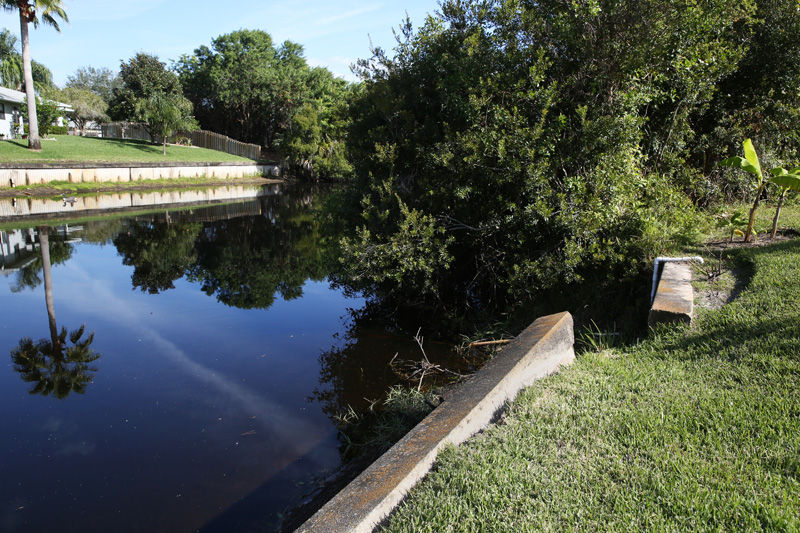SEBASTIAN — In a dramatic reversal from the position taken by City staff, the City Council at its mid-month meeting concluded that Sebastian most likely is responsible for the repair of seawalls along Elkam Canal.
Here is the background: Everyone has agreed all along that something needs to be done, and soon, about the failing 40-some-year-old seawalls along the canal. But that’s where the agreement ended.
Property owners believed it was the City’s responsibility to pay for repairs, while City Manager Joe Griffin came to believe otherwise after commissioning a survey of property lines.
Griffin and City Engineer Frank Watanabe have been up to their ears in the Elkam kerfuffle since late last year, listening to residents’ concerns, visiting the properties in question and examining property boundaries.
Residents with collapsing seawalls behind their homes had assumed the City would come to the rescue, basing this belief on a previous multi-million dollar seawall repair and canal dredging project along Collier Creek, in which the City took on the cost; they also believed the seawalls supporting their property were, as with most of the Collier Creek seawalls, on City-owned property.
But earlier this month they were unpleasantly surprised to learn the seawalls are, in fact, within an easement owned by the homeowners, not the City.
It was City staff’s contention, therefore, that the seawall repair would rightfully be the homeowners’ responsibility, and the property owners were so informed.
Former Sebastian City Attorney Richard Stringer was engaged by residents and discussion of a class-action lawsuit followed.
That is how the stage was set when Griffin and Watanabe brought the issue before the Council “for discussion” at the Jan. 14 meeting.
Council member Jim Hill was quick to toss the seawall ball right back into Griffin’s and Watanabe’s laps.
Hill stated categorically that, if a resident’s private property was in eminent, critical danger of tumbling into the canal, the City should do something. Pronto.
“My thought is until we can get some help from federal, state, St. John’s, we need to give them some relief [if they’re in immediate danger of] losing their properties, pools, bushes, dogs. . ”
Griffin interjected: “What I hear is that, if there is a damaged seawall, I have to fix it even if it’s on private property?”
“We gotta make it right,” Hill replied. “You and your staff need to come up with a solution.”
He then asked Griffin and Watanabe if the threat of critical damage is, in fact, immediate.
Watanabe had previously described the seawalls as being in “potentially critical condition.”
Asked whether the threat was critical right at that very moment, Watanabe considered, then replied “No.”
At that point, it was 10 p.m., and the Council quickly voted to extend the meeting, then jumped back into the canal issue.
Watanabe explained some options determined at a meeting he and Griffin had with St. Johns River Water Management District officials: The city could construct new seawalls along both sides of the 7-mile Elkam Canal; create slopes with benches and mitigations; or create a combination of seawalls and sloped banks.
Other discussion points included identifying wetland mitigation for seawalls and accomplishing the project in five 2-year phases.
At the SJRWMD meeting, it was agreed that permitting will be required; that drainage flow capacity throughout the system will need to be maintained; that there should be awareness of any possible safety or environmental issues relating to the removal of the old seawalls, including the possible presence of hazardous materials.
Once the project cost has been determined, funding could come, at least in part, through a 50-percent cost-sharing grant from SJRWMD.

